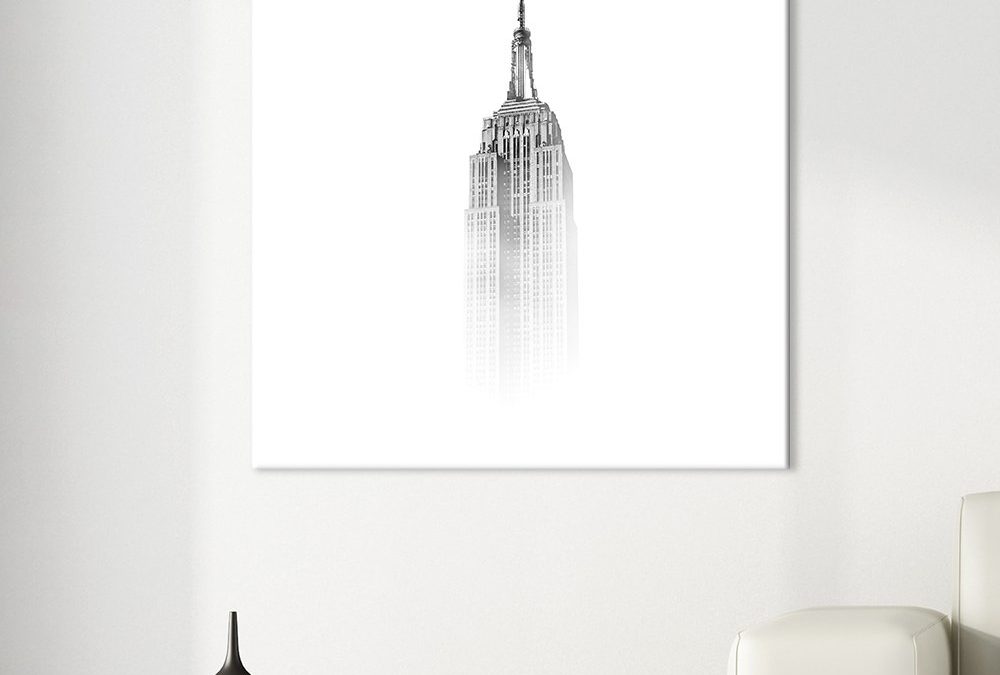Is there a symbol that is more iconic on the New York City skyline than the Empire State Building? Many people would find it difficult to think of something more magnificent! Concepted in the late 1920s during an economic boom, the Empire State Building remains one of the most influential architectural achievements both in America and across the world. At the time of its construction, there was fierce competition around New York for the erection of a skyscraper that dwarfed every other across the world in size. Despite challenges rom the Chrysler Building and Wall Street’s Bank of Manhattan, the Empire State won out in size. When the construction of the Empire State eventually completed in 1931, it stood at 1250 feet, making it the largest building in the entire world! For nearly 40 years, the Empire State Building remained the king of skyscrapers. In 1970, the Empire State Building became the second tallest building the world with the erection of the first World Trade Center tower. Interested in knowing more about this iconic building? Read below for more empire state building canvas art facts!
Records & Airships
- The construction of the Empire State Building was a massive undertaking. It involved an immense amount of work from designers, planners and building engineers to complete. Did you know that the Empire State building only took 20 months to complete? Built on the ground that previously house the Waldorf-Astoria hotel, the Empire State Building’s contracts quickly built it in just 410 days. Around 3,400 construction workers assembled it each day; they were so efficient that the Empire State’s skeleton was erected a pace of 4 and a half stories per week. This was such a fast process that the first 30 stories were completed before interior schematics were even finalized! The Empire State was finished ahead of schedule, while also coming in underbudget!
- There are many unusual things about the Empire State Building, but one of the most notable things about the tower is what it was originally partly designed to do. In the 1920s, technology was rapidly changing. Many were convinced that transatlantic airship travel was going to be the most common mode of mass transit in the world. In other words, people of that era believed transporting people in blimps was going to be both popular and feasible! Contractors built a mooring mast, on the top of the Empire State for blimps to attach to. In other words, contractors essentially made the Empire State a “port”, much like how boats make port on a dock. Unfortunately, the wind speeds at the top of the building made making port nearly impossible. The airship plan was aborted after that discovery. Read below for more empire state building canvas art facts!
Origins and Finances
- Did you know that the design of the Empire State Building isn’t completely original? William Lamb, the Empire State’s lead architect, actually modeled the building after other notable ones. In 1929, when Lamb was first concepting the tower, two of the most popular buildings of that era were North Carolina’s Reynolds Building and Carew Tower in Cincinnati. Funnily enough, both of those buildings were designed by Lamb! He looked to his previous works for inspiration when building the Empire State. He combined the two previous buildings’ art-deco stylings and formed a new aesthetic for the Empire State.
- The Empire State building is a shining representation of American ingenuity, but did you know that it wasn’t always perceived that way? The Empire State was originally concepted to be a house for multiple corporate offices. Unfortunately, the 1929 stock market crash and the Great Depression, both of which happened near the completion of the building, completely eliminated many business. When the buildings opened in 1931, less than 25% of the building space had tenants. The building was in such dire need of occupancy, that managers were instructed to keep the lights on at the top of the tower to make it look like it was occupied! The Empire State did not become profitable until World War II. Read below for more empire state building canvas art facts!
Crash & Plunge
- Want to know another crazy occurrence at the Empire State? On July 28th, 1945, a colonel for the army lost his way while flaying over Manhattan. Heavy fog and unfamiliarity with the surrounding environment made him disoriented. Unbeknownst to him, he was slowly descending from high altitude. He eventually got so low that he was flying just above skyscrapers in Manhattan. He managed to dodge several, but could not stop his plane before crashing directly into the Empire State. This crash caused an explosion that killed him and 11 people inside the building. The crash triggered blaze that was fortunately put out within the hour. The building was reopened only two days later.
- Did you know that the aforementioned crash actually caused a chain reaction of events within the building? Pieces from the plan were jettisoned around the building; some pieces were so sharp that they managed to cut through several objects. One piece of the plane cut through cables of an elevator shaft. One young woman happened to be in an elevator at the exact moment of the crash; once the cables were severed, she was sent plummeting down 75 stories. Amazingly, she survived with a broken neck and back. Her fall was cushioned due to an air pocket generated by the physics of the elevator’s quick descent. Read below for more empire state building canvas art facts!
Conclusion
The Empire State Building is one of the finest achievements in the history of architecture! Revered to this day, the Empire State is an extremely recognizable sight in New York City’s skyline? Have you seen it? Are you planning on visiting Manhattan one day to take in its splendor? We hope you are! Whenever you visit, at least you’ll be well read with these empire state building canvas art facts!




